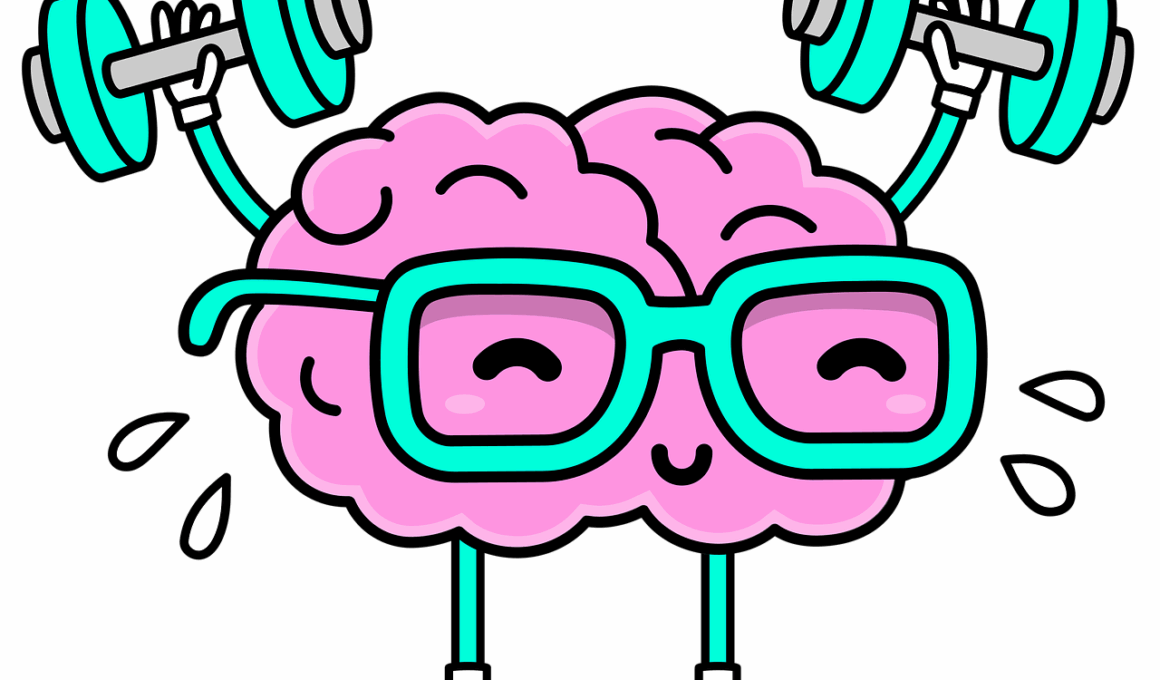How Brain Plasticity Supports Motivation and Reward Learning in Athletes
Understanding the relationship between brain plasticity and motivation is essential, especially in athletes. Neuroplasticity, the brain’s ability to reorganize itself, plays a critical role in learning and adapting to new challenges. When athletes engage in rigorous training, their brains adjust by creating new neural pathways that enhance their performance. This process not only improves physical skills but also significantly impacts motivational levels. The release of rewards, such as dopamine, reinforces positive behaviors when athletes meet their goals. Therefore, the more an athlete practices, the stronger the connection becomes between effort and reward, effectively heightening motivation. This connection is vital when striving for personal bests or pushing through tough training sessions. By fostering neuroplasticity, athletes can better adapt to both physical and mental challenges, optimizing their potential. Furthermore, understanding these mechanisms empowers athletes to set achievable goals, leading them to pursue excellence in their respective sports. They develop a mindset that embraces continuous improvement, resulting in sustained motivation throughout their training and competition phases.
An integral aspect of motivation entwines with goal-setting principles, which athletes must embrace. Goals serve as benchmarks that help athletes gauge their progress during training. More importantly, these purposeful objectives act as a source of motivation, guiding athletes toward success. By establishing specific, measurable, achievable, relevant, and time-bound (SMART) goals, athletes can track improvements effectively. Notably, neuroplastic changes in the brain enhance this goal-setting process by reinforcing pathways linked to successfully achieving these targets. Each successful completion releases dopamine, further solidifying the association between effort, reward, and motivation. By consciously setting and working toward distinct milestones, athletes stimulate their brains to adapt and grow. This ongoing cycle also cultivates resilience, enabling athletes to bounce back from setbacks while staying focused on their ultimate objectives. It’s important to remain adaptable, recalibrating goals when necessary to ensure sustained motivation. Additionally, social support influences motivation, as shared goals with coaches and teammates create a collaborative atmosphere. This collective effort enhances individual performance through shared accountability, further driving motivation and reinforcing positive changes in the brain’s reward system.
The Role of Dopamine in Motivation
Dopamine, a neurotransmitter often associated with pleasure, significantly contributes to motivation. When athletes achieve their goals, their brains release dopamine, creating a feeling of reward. This release not only provides immediate satisfaction but also encourages repetition of the behavior leading to that achievement. Dopamine reinforces pathways that connect specific actions with positive outcomes, facilitating a cycle of motivation and reward learning. The anticipation of highs of success increases motivation further, encouraging athletes to strive for excellence continually. Furthermore, the neural changes prompted by prolonged engagement in sports reveal that motivation extends beyond mere enjoyment. Neuroplastic changes enable athletes to view challenges as opportunities rather than obstacles, shifting their perception of discomfort and effort. Consequently, adherence to training routines strengthens these neural pathways, enhancing the athlete’s resiliency. It is crucial to recognize the importance of setting realistic goals, as this ensures consistent dopamine release without the risk of discouragement from failure. When achievements align closely with personal capabilities, motivation remains strong, fostering a positive experience that attracts long-term commitment in their athletic pursuits.
The interplay between emotions and motivation provides further insight into this intricate relationship. Emotions can act as both barriers and motivators within an athlete. Positive emotions, such as excitement and enthusiasm, elevate the motivation to train and compete. Conversely, negative emotions, such as fear and anxiety, can hinder performance. By understanding this dynamic, athletes can develop strategies to maintain a positive emotional state. Moreover, increased awareness of how their brain’s plasticity affects emotional regulation empowers athletes to manage their responses to stressors better. Engaging in mindfulness practices, such as meditation or visualization, allows athletes to train their brains to maintain focus and clarity during competition. These techniques foster a growth mindset, promoting resilience against challenges that arise. Regular practice helps in rewiring negative thought patterns into constructive ones, thus enhancing motivation. By adopting such mental strategies alongside physical training, athletes create an all-encompassing approach to personal development. The synergy of emotional control and brain function leads to enhanced motivation, allowing athletes to perform at their best consistently and adopting a holistic approach in their journey toward excellence.
Reward-Based Learning and its Impact
Reward-based learning extends motivation beyond intrinsic factors; it engages a broader spectrum of cognitive processes that athletes can harness. This type of learning leverages the innate desire for positive reinforcement, fostering an environment conducive to improvement. Athletes can incorporate reward systems, recognizing small achievements as significant milestones to maintain high motivation levels. For instance, rewarding successful training sessions with personal treats reinforces positive behavior. Additionally, the strategy cultivates a positive association with arduous tasks, gradually broadening the athlete’s capability regarding their comfort zones. As athletes receive consistent feedback, neuroplastic changes occur, ensuring that the brain recognizes new routines and adapts accordingly. This adaptive response enhances overall performance and establishes a deeper emotional connection with their sport. Another critical factor involved is social validation through feedback from coaches and team members. This external acknowledgment can considerably influence an athlete’s motivation by affirming their hard work. Engaging in performance evaluations and open discussions about progress promotes a culture of continuous learning, inspiring athletes to remain committed and enthusiastic in their pursuit of excellence and fostering an environment where motivation springs from growth.
The neurobiological mechanisms guiding motivation and goal setting signify the importance of physio-emotional well-being. Athletes must prioritize care for both mental and physical health for optimal performance. Engaging in sports not only demands physical prowess but also cognitive control and emotional stability. By developing coping strategies, athletes can effectively manage pressures and challenges. Furthermore, participation in supportive environments bolsters motivation, helping athletes foster connections with their peers, which can be immensely beneficial. Techniques such as journaling, self-reflection, and goal tracking can also enhance awareness of their progress. These habits promote self-motivation by encouraging athletes to focus on their growth and improvements. Optimal performance is a balance of goal setting, emotional regulation, and an understanding of personal motivations. Athletes can cultivate self-awareness, reflecting on their intrinsic motivations and external incentives. Striking this balance fosters an atmosphere where an athlete’s skills and emotional engagement, nurtured through plasticity in the brain, contribute to sustainable motivation. Therefore, transforming one’s mindset can significantly influence performance, highlighting the necessity of an all-inclusive approach that embraces the science of motivation in sports.
Conclusion: Embracing Neuroplasticity for Enhanced Motivation
Recognizing and embracing the connection between neuroplasticity and motivation is transformative for athletes. By understanding how the brain adapts in response to training and emotional experiences, athletes can leverage these mechanisms for improved performance. Notably, the ability to set and achieve goals becomes more powerful when aligned with the knowledge of how brain function influences motivation. The journey towards excellence is not solely a physical endeavor; it requires an integrated approach encompassing mental, emotional, and social dimensions. Coaches and athletes alike must appreciate the importance of creating supportive environments that encourage personal growth and resilience. Likewise, integrating psychological techniques and establishing a clear reward system can further amplify motivation and performance. As athletes cultivate a growth mindset, they can view their challenges and setbacks as opportunities to learn and improve. Harnessing the power of brain plasticity leaves them equipped to face adversity, enabling them to push beyond their limits, aiming for greatness. Together, these elements create a comprehensive framework that enhances motivation, reinforcing the invaluable impact of understanding the science behind rewards and motivation in the pursuit of athletic excellence.


